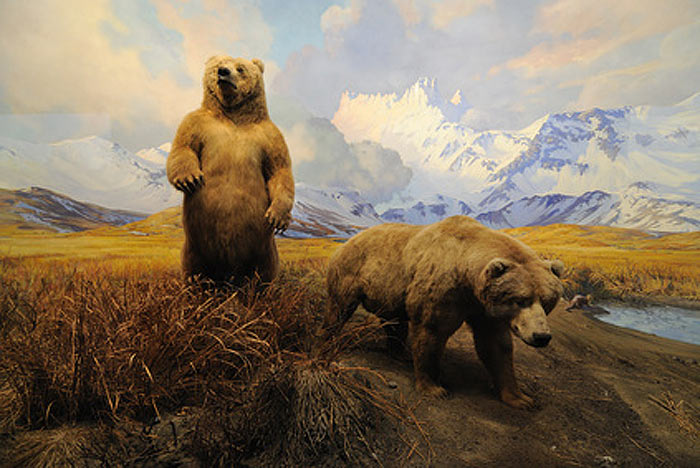In lieu of simply mounting an animal hide, some taxidermists prefer to create a scene with the animal mounted on a realistic portion of its habitat. Squirrels climbing down stumps, or birds perched on branches, are both popular subjects for crating taxidermy habitats. To do so properly, however, requires some specific supplies.
Aside from the usual knives, fleshing tools, sewing needles, buckets, and other things needed for taxidermy itself, creating realistic habitats requires two basic types of things- the base of the habitat, and supplies to make it look more natural. The base of the habitat will vary, of course, depending on the species of animal that is going to be mounted. Usually, wood, foam, or hardware cloth is used, while a mixture of paper-mache, plaster, or a similar material is layered over to create a hard, ground-like base. Keeping a selection of base materials in different sizes is a good idea, as they’re generally inexpensive, don’t take up very much space for storage, and can be mixed up as needed.
 After the base of the habitat is chosen, then come the supplies to make it look natural. Slabs of slate, artificial rocks, and driftwood are popular additions, particularly since they can be easily cut, sculpted, or painted to fit the taxidermist’s needs. Though habitats will necessarily vary depending on the mounted animal, every taxidermist should keep a few sizes of artificial rocks and driftwood on hand. Once the right materials are chosen, they must be assembled on the base. Caulk, glue, epoxy, or resins are all employed, depending on whether natural wood, stone, or an artificial equivalent is used for decoration.
After the base of the habitat is chosen, then come the supplies to make it look natural. Slabs of slate, artificial rocks, and driftwood are popular additions, particularly since they can be easily cut, sculpted, or painted to fit the taxidermist’s needs. Though habitats will necessarily vary depending on the mounted animal, every taxidermist should keep a few sizes of artificial rocks and driftwood on hand. Once the right materials are chosen, they must be assembled on the base. Caulk, glue, epoxy, or resins are all employed, depending on whether natural wood, stone, or an artificial equivalent is used for decoration.
Often, habitat decorations will be the right size, but the wrong color. This can be fixed with something as simple as a few coats of paint, or as elaborate as artificial water or snow. Generally, rock, driftwood, or both are glued or epoxied to the base in a realistic tableau, then painted to hide any evidence of gluing. Small bits of natural moss or silk plants make great aesthetic additions to habitats for forest animals, and can be easily purchased from taxidermy supply or craft shops. Every taxidermist who enjoys making habitats for their mounts should keep some dried moss, a set of paints, and a variety of adhesives in their toolkit, since these relatively simple supplies can be used to create a number of very different scenes.
Habitats are, above all, artistic creations, and each artist has the tools and materials they prefer to work with.
With some practice and a good eye, it’s possible for a taxidermist to make a habitat even more beautiful and valuable than the mounted animal itself.

